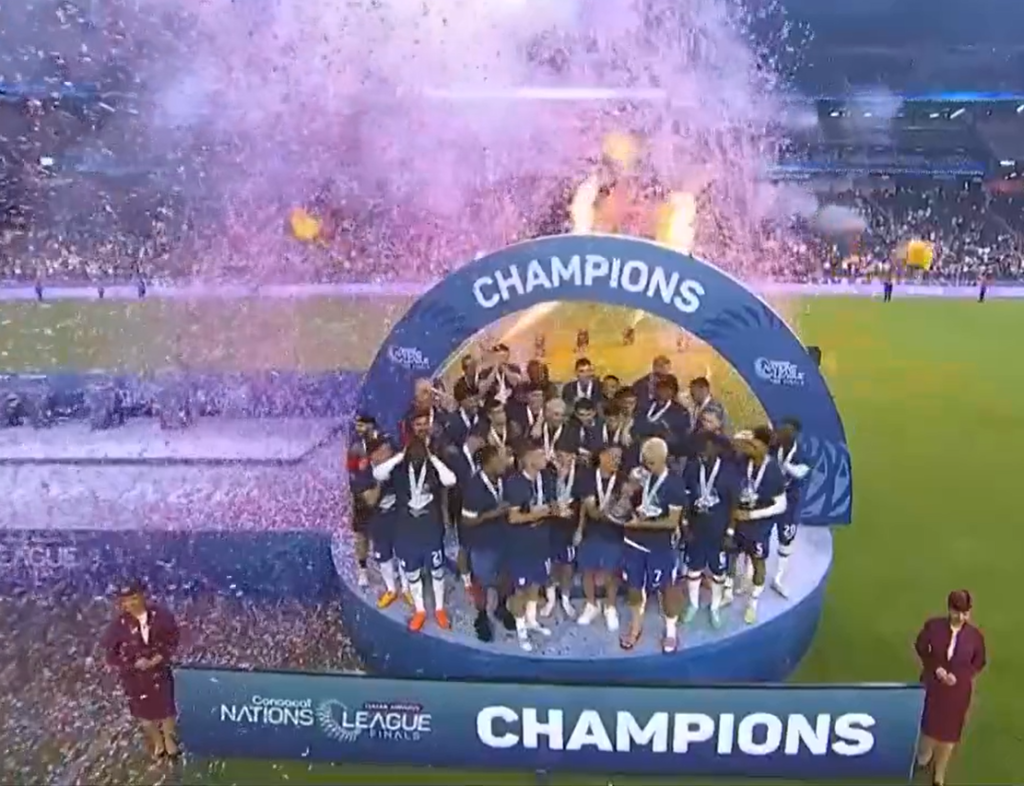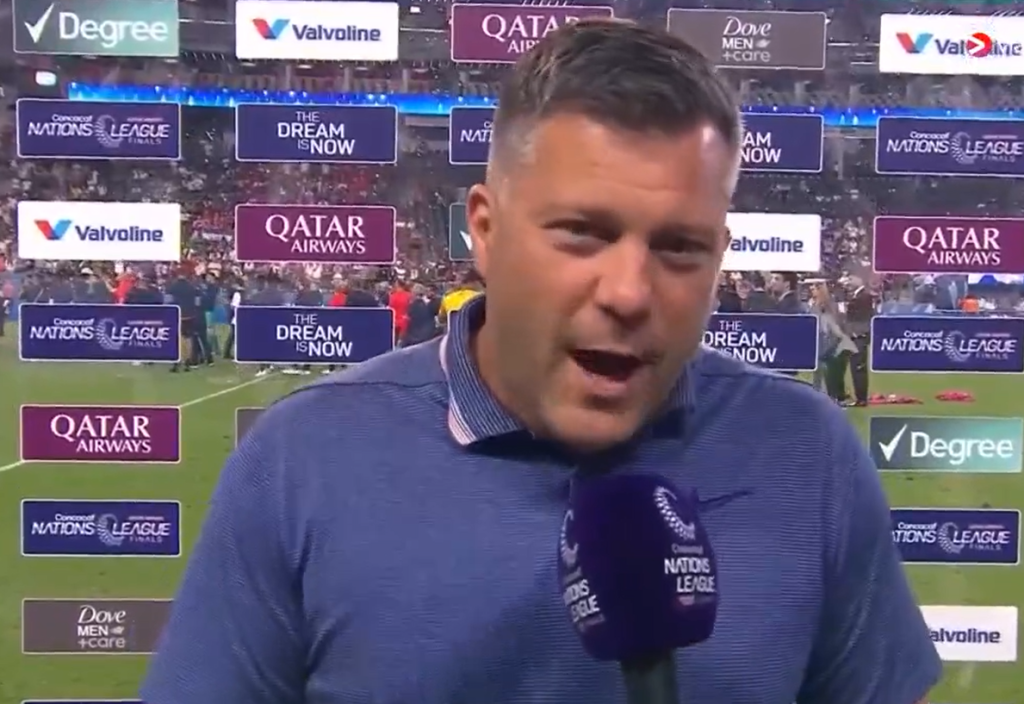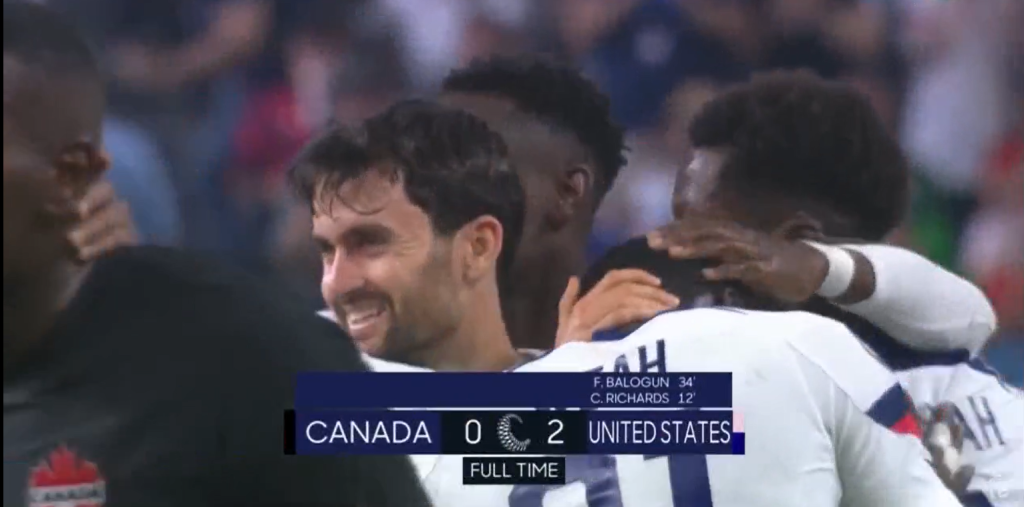
USMNT is the CONCACAF Champion. In the final match of the CONCACAF Championship, the United States emerged victorious against Canada with a score of 2-0. Throughout the game, the US men’s national team maintained control over the trends and dictated the pace. Despite their best efforts, Canada struggled to break through the American defense due to their speed and agility. While Canada did manage to get past the Americans on several occasions, they were ultimately unable to score any goals.

We reached out to soccer expert Mr. Simo Idrissi for his thoughts on the match. He stated, “USMNT is the CONCACAF Champion congratulations, I have watched Canada play in many matches since the World Cup Qatar 2022. They had an appropriate speed and were able to control the ball, but they did not win. However, in this final match, I saw Canada appear disorganized in terms of both defense and attack. Many of the players did not seem committed to a collective performance, which suggests that the coach was unable to build a harmonious squad capable of facing continental and international challenges. While I cannot deny that the Canadian players are talented and possess good speed and skills, their tactical performance was completely absent in this final match.”


Mr. Simo Idrissi is a Moroccan-American coach who holds a Master’s in sports and health science, A license from USSF, and many more certificates in sports psychology, leadership, and performance. His expertise and insights provide valuable analysis of the match. You can watch the analysis of his game on our youtube channel SCPPNews.

During the game, several American players sustained injuries. The physical demands of the match and the intense physical contact contributed to these incidents. Despite these setbacks, the US team persevered and ultimately emerged victorious.

In conclusion, USMNT is the CONCACAF Champion, the US team triumphed over Canada in the final match of the CONCACAF National League with a score of 2-0. The Americans dominated the game with speed and possession, while Canada struggled to penetrate the US defense and ultimately failed to score any goals. Football expert Mr. Simo Idrissi provided valuable analysis of the match, highlighting Canada’s disorganization and lack of tactical performance. Mr. Simo Idrissi will provide further analysis and review of this match If interested please visit the USA vs Canada game analysis.
Simo Idrissi game analyzation
Case 1 A “When in possession, Canada turned to a 3-5-2 formation. Their plan was to utilize the length and width of the field and create numbers up. To penetrate the defense, Canada attempted to use direct play behind the last four defenders, and often played long passes to left-back Alphonso Davies due to his speed.”


Case 2 A “Implementing a high press with a 5-3-2 formation can be confusing and easily lead to disorientation, especially if the players are not mentally prepared to execute such tactical behavior.”
Case 2 B “Marking players in this manner in the attacking third does not provide clear instructions on what actions they should take. A single pass could result in the team being outnumbered.”

Case 3 “During transitions to attack, teams organize the momentum of the event and initiate action. However, Canada was unable to effectively organize a counterattack from a tactical standpoint. For example, Cyle Larin and Jonathan David are notably slower than Alphonso Davies, who is not only faster than Cyle but also faster than any player on the United States team. Unfortunately, the coach did not assign him a role that suited his abilities and allowed him to take advantage during the start of an event.”

Case 4 “In my constructive criticism, during the second half, Canada continued to use an unmastered high pressing style in the attacking and middle thirds of the field. Their defensive strategy could benefit from analysis to determine the best course of action. The Canadian players are not naturally defensive and their strength lies in their speed of play. This type of defense is a waste of energy when it leaves midfielders outnumbered and allows the opponent to switch the point of attack.”

Case 5 “When in possession, the US team used a 4-2-3-1 formation and didn’t focus on widening the field. They utilized Pulisic’s speed, but the Canadian defense was able to match and easily handle the situation. Canada didn’t pose a significant threat to the US players, so their tactics were sufficient even though many mistakes were made during possession and building from the back.”

Case 6 “During defensive events, the US team used a 4-2-3-1 formation. They focused on zonal defending and were reactive rather than proactive. They only pressed when Canada made mistakes. The US team’s strength was their disciplined reaction as a team, with precise organization, compactness, and timing that disrupted Canada’s possession. Canada maintained their 4-1-4-1 formation while in possession and focused on passing the ball long to the left side.”


Case 7 A “After scoring two goals, the US team stuck to their traditional approach by remaining compact and reactive, without taking risks by pressing. It was easy for them to regain possession of the ball. Canada struggled to penetrate due to their weak organization and the solid compactness of the US defense. To overcome this, Canada needed to use tricks to lure defenders out of their positions.”
Case 7 B “Keeping possession means retaining control of the ball, but it is not necessarily related to building an attack or changing its direction. If players cannot find solutions, it may indicate that they have reached their performance limits. Although it may seem harsh, players possess different skills and physical abilities that should be recognized by the Canadian coaching staff and planned for accordingly.”


Case 8 “To confirm my observations, consider this repeated scenario: The US team applied their defensive style in both the attacking and middle thirds of the field. Canada had possession of the ball and continuously tried to change the course of the game but were unable to figure out how to deal with the style used by the USA.”

Case 9 “The US team maintained their firm organization and waited for Canada to make mistakes. On the other hand, Canada was trying to make something happen. When observing patterns and repeated events, even slight changes or player innovations can be understood by an analyst.”
